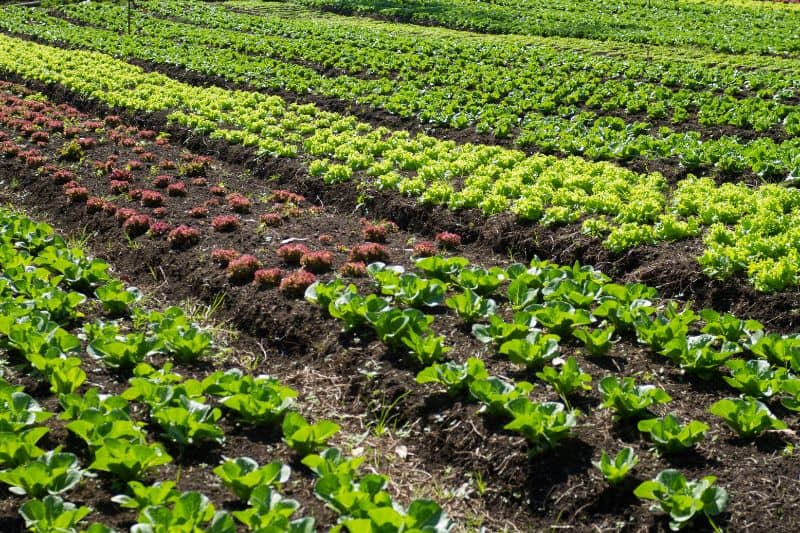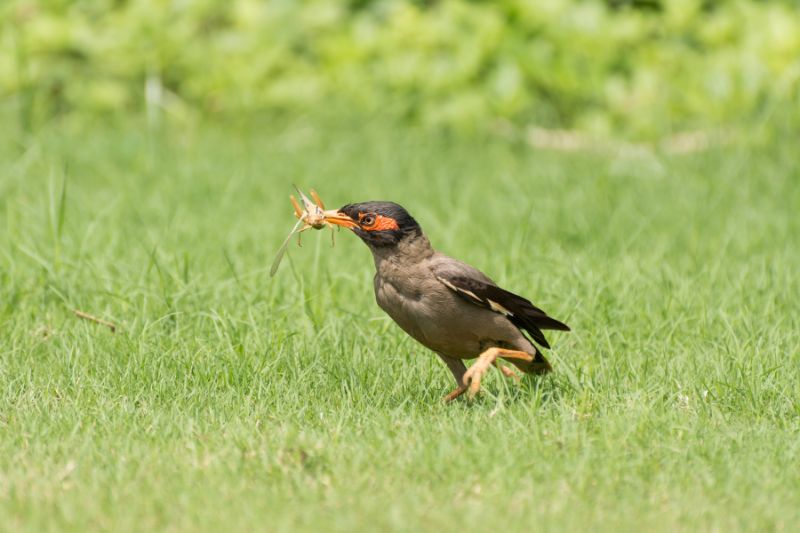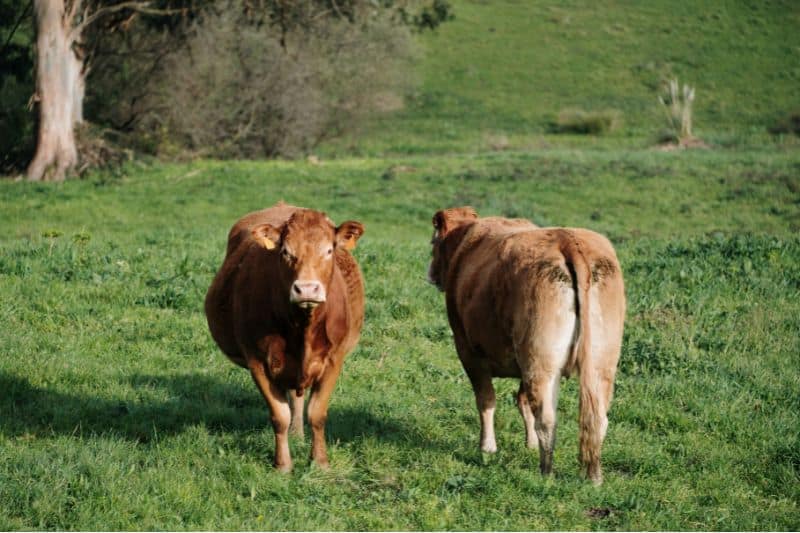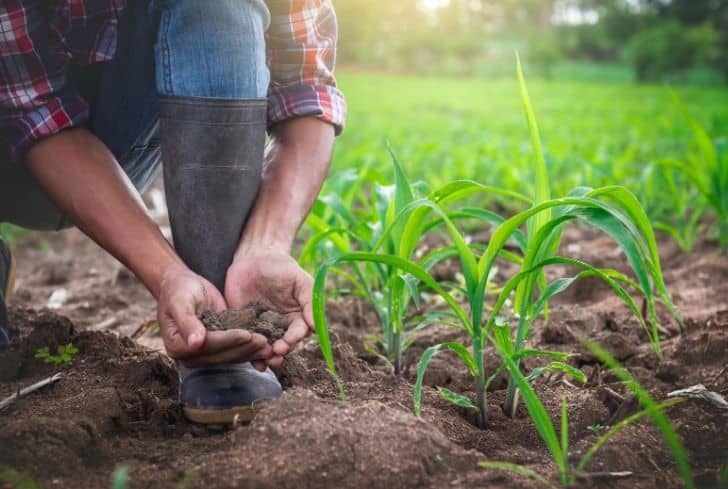The word sustainable has become very popular in recent years, and it is now used to describe a lot of things.
But what is sustainable agriculture?
Simply put, sustainable agriculture is the production of plant and animal products, including food, in a way that uses farming techniques that protect the environment, public health, communities, and the welfare of animals.
Sustainable agriculture allows us to produce and enjoy healthy foods without compromising the ability of future generations to do the same. The key to sustainable agriculture is finding the right balance between the need for food production and the preservation of environmental ecosystems.
In addition, sustainable agriculture promotes economic stability for farms and helps farmers to better their quality of life. In fact, agriculture continues to be the biggest employer in the world, with 40% of the world’s population, and 70% of those living in rural areas working in it.
More from Sustainability:
- What is Sustainable Energy?
- What is Environmental Sustainability and Sustainable Development?
- What is Sustainable Development and What are its Goals?
- What is Sustainable Living and 15 Easy Ways for Sustainable Living?
- What is Sustainable Farming and Best Sustainable Farming Practices?
- Is Renewable Energy Sustainable?
According to Wikipedia,
“Sustainable agriculture is farming in sustainable ways, which means meeting society’s present food and textile needs, without compromising the ability of current or future generations to meet their needs. It can be based on an understanding of ecosystem services.“
Sustainability is a seemingly laudable goal – it tells us we need to live within our means, whether economic, ecological, or political – but it’s insufficient for uncertain times. How can we live within our means when those very means can change, swiftly and unexpectedly, beneath us?
~ Jamais Cascio
If given a choice, I’m sure we would all choose to consume natural chemical-free food instead of food sprayed with pesticides and chemical fertilizers, and sustainable agriculture advocates for that.
Sustainable agriculture differs greatly from industrial agriculture, where large volumes of crops and livestock are produced for sale using industrial techniques.
Industrial agriculture relies heavily on pesticides and chemical fertilizers and other chemical enhancers.
In the past decade, the majority of the food we ate has been grown in this manner. However, in the last couple of years, due to the negative aspects of the technique, there has been a slight shift towards the use of sustainable agricultural methods.
Methods of Sustainable Agriculture
Some of the ways we can consider to ensure that we embrace sustainability in agriculture involve the following:
1. Crop Rotation

Crop rotation is one of the most powerful techniques of sustainable agriculture. Its purpose is to avoid the consequences that come with planting the same crops in the same soil for years in a row. It helps tackle pest problems, as many pests prefer specific crops. If the pests have a steady food supply, they can greatly increase their population size.
Rotation breaks the reproduction cycles of pests, eliminating the need for using chemical pesticides. By also alternating the type of crops, you can help in the natural replenishment of soil nutrients and minerals, so you don’t have to opt for chemical fertilizers.
2. Permaculture
Permaculture is a food production system with intention, design, and smart farming to reduce waste of resources and create increased production efficiency.
Permaculture design techniques include growing grain without tillage, herb and plant spirals, hugelkultur garden beds, keyhole and mandala gardens, sheet mulching, each plant serving multiple purposes, and creating swales on contour to hold water high on the landscape.
It focuses on the use of perennial crops such as fruit trees, nut trees, and shrubs all together to function in a designed system that mimics how plants in a natural ecosystem would function.
3. Cover Crops
Many farmers choose to have crops planted in a field at all times and never leave it barren; this can cause unintended consequences. By planting cover crops, such as clover or oats, the farmer can achieve his goals of preventing soil erosion, suppressing the growth of weeds, and enhancing the quality of the soil. The use of cover crops also reduces the need for chemicals such as fertilizers.
4. Soil Enrichment
Soil is a central component of agricultural ecosystems. Healthy soil is full of life, which can often be killed by the overuse of pesticides. Good soils can increase yields as well as help create more robust crops.
It is possible to maintain and enhance the quality of the soil in many ways. Some examples include leaving crop residue in the field after a harvest, and the use of composted plant material or animal manure.
5. Natural Pest Predators

In order to maintain effective control over pests, it is important to view the farm as an ecosystem as opposed to a factory. For example, many birds and other animals are, in fact, natural predators of agricultural pests.
Managing your farm so that it can harbor populations of these pest predators is effective as well as a sophisticated technique. The use of chemical pesticides can result in the indiscriminate killing of pest predators.
6. Bio Intensive Integrated Pest Management
Integrated Pest Management (IPM) is an approach, which essentially relies on biological as opposed to chemical methods. IMP also emphasizes the importance of crop rotation to combat pest management.
Once a pest problem is identified, IPM will ensure that chemical solutions will only be used as a last resort. Instead, the appropriate responses would be the use of sterile males and biocontrol agents such as ladybirds.
7. Polyculture Farming
This technique is similar to crop rotation that tries to mimic natural principles to achieve the best yields. It involves growing multiple crop species in one area. These species often complement each other and helps produce a greater diversity of products at one plot while fully utilizing available resources.
High biodiversity makes the system more resilient to weather fluctuations, promotes a balanced diet and applies natural mechanisms for maintaining soil fertility.
8. Agroforestry
Agroforestry has become one of the powerful tools of farmers in dry regions with soils susceptible to desertification. It involves the growth of trees and shrubs amongst crops or grazing land, combining both agriculture and forestry practices for long-lasting, productive, and diverse land use when approached sustainably.
Trees have another important role that maintains the favorable temperature, stabilizes soils and soil humidity, minimizes nutrient runoff and protects crops from wind or heavy rain. Trees in this farming system are additional sources of income for farmers with the possibilities for product diversification.
9. Biodynamic Farming
Biodynamic farming incorporates ecological and holistic growing practices based on the philosophy of “anthroposophy.” It focuses on the implementation of practices such as composting, application of animal manure from farmed animals, cover cropping or rotating complementary crops for generating the necessary health and soil fertility for food production.
Biodynamic practices can be applied to farms that grow a variety of produce, gardens, vineyards, and other forms of agriculture.
10. Better Water Management
The first step in water management is the selection of the right crops. Local crops that are more adaptable to the weather conditions of the region are selected. Crops that do not demand too much water must be chosen for dry areas.
There should be well-planned irrigation systems; otherwise, other issues like river depletion, dry land and soil degradation will develop.
The application of rainwater harvesting systems by storing rainwater can be used in drought prevailing conditions. Apart from that, municipal wastewater can be used for irrigation after recycling.
Benefits of Sustainable Agriculture
Of course, there are lots of benefits that come with sustainable agriculture. Let’s take a close look at some of them:
1. Contributes to Environmental Conservation

The environment plays a huge role in fulfilling our basic needs to sustain life. In turn, it is our duty to look after the environment so that future generations are not deprived of their needs. Sustainable agriculture helps to replenish the land as well as other natural resources such as water and air.
By adopting sustainable practices, farmers will reduce their reliance on nonrenewable energy, reduce chemical use, and save scarce resources. This replenishment ensures that these natural resources will be able to sustain life for future generations considering the rising population and demand for food.
2. Saves Energy for Future
Modern agriculture is heavily dependent on nonrenewable energy sources, especially petroleum. Sustainable agricultural systems have reduced the need for fossil fuels or nonrenewable energy sources and a substitution of renewable sources or labor to the extent that is economically feasible.
3. Public Health Safety
Sustainable agriculture avoids hazardous pesticides and fertilizers. As a result, farmers are able to produce fruits, vegetables, and other crops safer for consumers, workers, and surrounding communities.
Through careful and proper management of livestock waste, sustainable farmers can protect humans from exposure to pathogens, toxins, and other hazardous pollutants.
4. Prevents Pollution
Sustainable agriculture means that any waste a farm produces remains inside the farm’s ecosystem. In this way, the waste cannot cause pollution and there’s minimal to no waste at all winding up in landfills.
5. Prevents Air Pollution
Agricultural activities affect air quality in several ways. It can be through smoke emanating from agricultural burning, dust from tillage, traffic and harvest, pesticide drift from spraying, and nitrous oxide emissions from the use of nitrogen fertilizer.
In sustainable agriculture, there are options to improve air quality by incorporating crop residue into the soil, using appropriate levels of tillage, and planting windbreaks, cover crops or strips of native perennial grasses to reduce dust.
6. Prevents Soil Erosion
Our continued ability to produce adequate food has been a serious threat to soil erosion. Sustainable agriculture brings in numerous practices to keep soil in place, including reducing or eliminating tillage, managing irrigation to reduce runoff, and keeping the soil covered with plants or mulch.
Selection of suitable species and varieties that are well suited to the site and conditions on the farm can improve crop yield and diversification of crops (including livestock), and cultural practices enhance the biological and economic stability of the farm.
7. Reduction in Cost
Sustainable agriculture lessens the overall costs involved in farming. It has introduced smarter farming and moving of food from farm-to-fork in a more efficient manner, and this has helped everyone involved with the agriculture industry. IoT data from sensors installed in everything from seed drills, sprayers, and spreaders to drones, satellite imagery, and soil make it so surprises become rarities.
8. Biodiversity
Sustainable farms produce a wide variety of plants and animals, resulting in biodiversity. During crop rotation, plants are seasonally rotated, and this results in soil enrichment, prevention of diseases, and pest outbreaks.
9. Sustainable Livestock Management
Sustainable agriculture includes sustainable livestock production by selecting appropriate animal species, animal nutrition, reproduction, herd health, grazing management, which leads to the overall development of livestock for the long term.
10. Beneficial to Animals

Sustainable agriculture results in animals being better cared for, as well as treated humanely and with respect. The natural behaviors of all living animals, including grazing or pecking, are catered for.
As a result, they develop in a natural way. Sustainable farmers and ranchers implement livestock husbandry practices that protect animals’ health.
11. Economically Beneficial For Farmers
In exchange for engaging with sustainable farming methods, farmers receive a fair wage for their produce. This greatly reduces their reliance on government subsidies and strengthens rural communities. Organic farms typically require 2 ½ times less labor than factory farms yet yield 10 times the profit.
12. Social Equality
Practicing sustainable agriculture techniques also benefits workers as they are offered a more competitive salary as well as benefits. They also work in humane and fair working conditions, which include a safe work environment, food, and adequate living conditions.
13. Beneficial For Environment
Sustainable agriculture reduces the need for the use of nonrenewable energy resources and, as a result, benefits the environment.
Due to population increase, it is estimated that by 2050 we will need approximately 70% more food than is currently being produced in order to provide the estimated 9.6 billion world population with their recommended daily calorie intake. This is by no means a small challenge, but unlike many other sustainability challenges, everyone can play a part.
We all need to eat, but by simply reducing food loss and waste, as well as eating diets that are of lower impact, and investing in sustainable produce, we can make a difference. From countries to companies, right down to consumers, we all have a role to play. The challenge is simply making people care in a world where we are surrounded by such abundance.
References:






